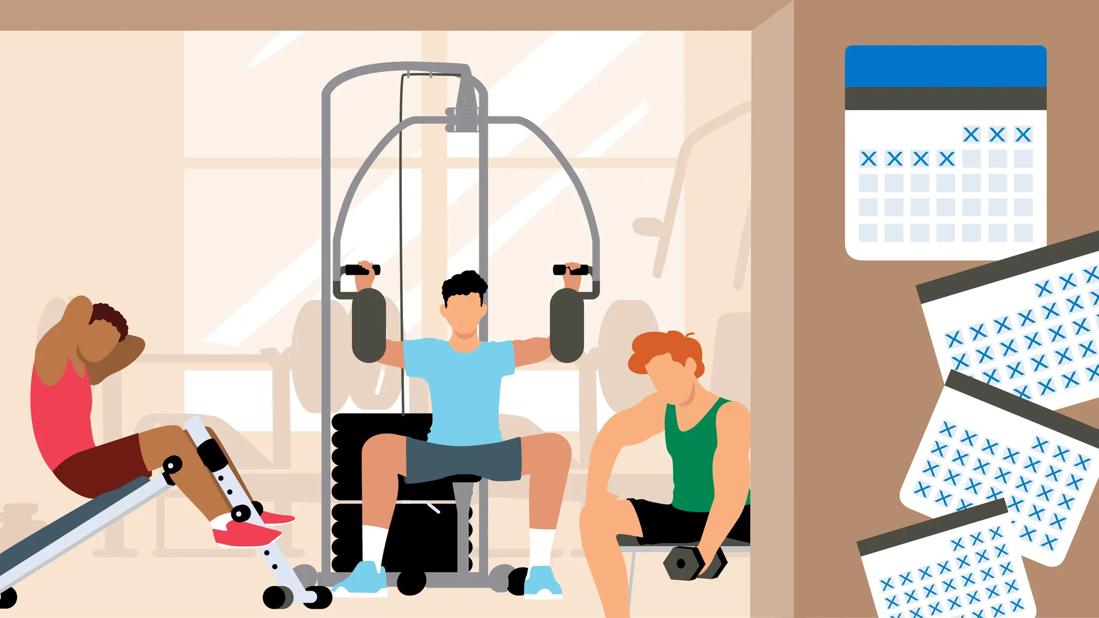It can take three to four weeks to experience improvement in strength, and up to six months or more to notice visible changes

Whether you’re a seasoned athlete or a complete beginner, building muscle mass can be an exciting journey for everyone. But muscle building isn’t an overnight process. It takes time and dedication to exercise, diet and nutrition. But if you start down the path to building muscle, just how long will it take until you can expect to see visible, physical results?
Advertisement
Cleveland Clinic is a non-profit academic medical center. Advertising on our site helps support our mission. We do not endorse non-Cleveland Clinic products or services. Policy
Athletic trainer Tom Iannetta, ATC, CSCS, provides a timeline for building muscle and shares what important factors determine your muscle-building speed.
It generally takes about four to 12 weeks to see physical improvements in muscle growth, and sometimes, upwards of six months to visibly notice really big gains in muscle mass. That said, how fast you build muscle depends on a variety of factors related to:
For example, it becomes harder to gain muscle as we get older because of a natural age-related progressive loss of muscle mass and strength. In those instances, it may take longer for someone to build muscle than a younger athlete — but it’s still possible to make improvements if you’re consistent with strength training and nutrition.
“With any kind of workout, the first three weeks is neuromuscular reeducation, where your muscles are basically learning how to lift that particular weight or do that particular exercise,” explains Iannetta.
That means you likely won’t see any physical results right away. A general timeline for muscle building looks like the following:
Advertisement
“As your muscles work harder and get stronger, they rebuild and repair themselves, producing stronger muscle tissue and eventually more muscle mass,” Iannetta further explains. “As you gain strength and improve your endurance, you can progressively overload your muscles and take on more weight or do more reps, which then results in further muscle definition.”
Muscle building takes time, but there are things you can do to make sure you stay on track and get the results you need without distraction. First, pushing yourself too hard too fast could potentially lead to injury and delay your ability to gain muscle — so be smart about your approach.
“You should build in time for rest and recovery because your muscles need time to repair themselves in order to build more muscle tissue,” stresses Iannetta. “For every five days of exercise, you should have at least 24 to 48 hours of rest.”
That doesn’t mean you have to spend those days doing nothing. Iannetta strongly recommends active recovery, which involves participating in low-impact, light physical activity like walking, swimming or yoga.
“By doing active recovery exercises, you can reduce soreness, increase your muscle recovery time, keep your heart rate up and focus on other areas of your body that benefit from flexibility and stretching,” he adds.
At the end of the day, more muscle leads to improvements in strength and endurance, which can then improve your quality of life. Try not to give up. If you don’t recognize visible results right away, focus on other benefits and improvements, like your ability to exercise longer or your ongoing strength, until those visible changes begin to surface.
Advertisement
Learn more about our editorial process.
Advertisement

From protein consumption to progressive strength training and recovery time, you can build more muscle mass in four to 12 weeks

These fibers are your friend for aerobic and endurance exercises

Strength training and HIIT exercises can keep these vital muscle fibers strong

Breathing, exercise, mindfulness and more can help you unwind and step away from your stress

Move a little more, eat a little healthier, sleep a little better and destress a lot

From breath meditation to yoga nidra, all types of meditation aim to help you feel calmer, more relaxed and present

This fruit has clear nutritional benefits — but there’s little evidence it can prevent or treat illness

Until there’s more research on it, this plant’s greatest claim to fame is its deliciousness

The ‘sunshine vitamin’ is found naturally in some fish and is added to other foods

Autism and ADHD often go hand in hand, giving rise to the term AuDHD

The Yuzpe regimen is less effective than other forms of emergency contraceptives, and it’s associated with more side effects